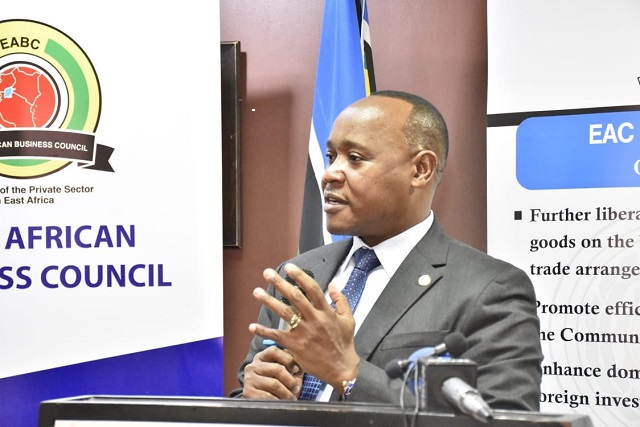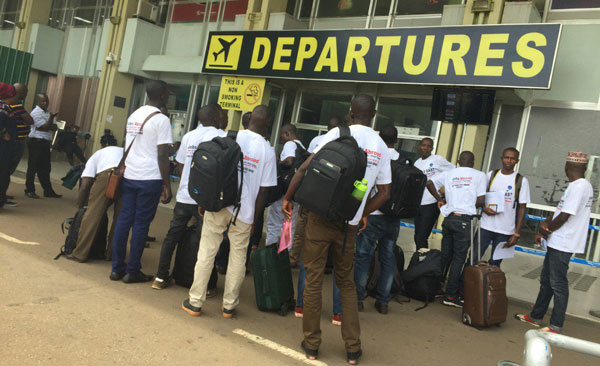
Kigali, Rwanda | THE INDEPENDENT | The East African Community (EAC) is consulting widely on ways of streamlining migration in the region to make it more beneficial to the development of the member countries.
The ministers in charge of EAC, internal and labour, directorates of immigration from the region, as well as the EAC Secretariat, the International Organisation for Migration (IOM) and other UN agencies hope to establish a Regional Consultative Process on Migration (RCP) after their meeting in Kigali, Rwanda.
According to the Secretariat, the RCP is aimed at addressing migration in “a holistic approach and build effective consultation networks on migration governance and policy frameworks that promote migration and development.”
The three-day meeting that concludes on Wednesday, will provide a framework for the EAC Partner States to have an informal, discrete and non-binding dialogue on migration and governance issues in the region for the first time.
Until now, migration in the region has usually been handled as a security matter, with migrants, who are mainly fleeing insecurity and drought at home are seen as a threat to the security of the host or destination country. But now, the proposed approach is based on the realization that actually migrants can boost national development.
“The objective of the RCP is to help Partner States to move away from a securitized approach to migration to broaden understanding of migration by appreciating that migrants and increased mobility in East Africa can contribute to national development, reducing poverty and lowering the unemployment rate among the youth, and other benefits,” according to the concept paper of the meeting.
The region has an estimated population of 195 million, almost 5 million of which are international migrants, more than 2.8 million refugees and asylum seekers, and close to 2.4 million internally displaced persons (IDPs).
Uganda has the biggest number at about 1.7 million refugees, followed by Kenya with 1 million. More importantly, all the six countries in the region are nations of origin, destination and transit for migrants, the displaced and other groups on the move, according to the IOM.
EAC Secretary General Peter Mathuki says the move should also answer the questions regarding the increase in labour migration from the region to the Middle East.
“With an increase in the flow of labour migrants from the region to destinations like the Gulf Cooperation Council (GCC), increased climate change-induced migration, forced displacement and migration, conflict-driven migration and the impact of the COVID-19 pandemic on mobility, an RCP on migration for the region is timely,” says Dr. Mathuki.

The EAC RCP comes as a smaller and more detailed version of the Migration Dialogue for the Intergovernmental Authority on Development Region.
Other similar and operational initiatives in Africa include the Migration Dialogue for West Africa (MIDWA), the Migration Dialogue for Southern Africa (MIDSA) and the Migration Dialogue from the Common Market for Eastern and Southern Africa Member States (MIDCOM).
The formation of first RCP dialogue process can respond to migration challenges in the region and maximize the development opportunities migration can bring. It is hoped that the establishment of a REC for the EAC region will be in tandem with the 2016 New York Declaration for Refugees and Migrants and the Global Compact for Migration.
Mathuki says that the proposed RCP would benefit EAC through the creation of effective networks for migration governance and establishing a policy framework for migration and governance.
“The RCP will present a significant opportunity to improve the governance on migration, to address challenges associated with contemporary migration, and to strengthen the contribution of migrants and migration to sustainable development in the region,” said Dr. Mathuki.
On his part, Mohammed Abdiker, the IOM Regional Director for the East and Horn of Africa, said that the RCP was the results of the recognition by Partner States on the need to continuously dialogue and cooperate on migration issues at the national and regional levels.
It is hoped that the establishment of a RCP for the EAC region will lead to policy makers addressing migration in a holistic manner, creating intergovernmental networks to consult on migration governance to promote migration and development.
“The RCPs are the results of the recognition by states for the need to continuously dialogue and cooperate on migration issues at the state and regional levels. States will address migration in a holistic approach and build effective consultation networks on migration governance and policy frameworks that promote migration and development,” says Abdiker.
Rather than the common view that migrants stretch the resources of the host countries and therefore affect their progress, a study OECD (OECD/ILO (2018), How Immigrants Contribute to Developing Countries’ Economies, OECD Publishing, Paris) gives an opposite view.
The OECD, (Organisation for Economic Co-operation and Development), a group of 38 industrialised countries, instead says migrants have a direct benefit to the host countries if integrated well. “How well immigrants are integrated into the host country’s labour market is directly linked with their economic contribution to their destination countries. Immigrants in most partner countries have higher labour force participation and employment rates than native-born workers,” says the study report.
One quality migrant workers have over the natives is the ability to take on any quality of jobs, though this remains a concern to the OECD and the UN because they often face a lack of decent work.
The study shows that the economic contribution of migrants to developing countries varies from one to another but averages 7% of the GDP. In Africa, migrant contribution is highest in Ivory Coast and South Africa, up to about 19 percent of GDP, and the two also have the highest numbers of immigrants on the continent, at 2.5 and 4.2 million respectively.
“As workers, immigrants are part of, but also have an impact on, the labour market; they also alter the country’s income distribution and influence domestic investment priorities. As entrepreneurs and investors, they create job opportunities and promote innovation and technological change,” says the study. It adds that even student migrants also contribute in form of expanding the labour stock.
Many developed countries, including the USA, Japan and Australia, owe their advancement to migrants, especially from Israel, Eastern Europe and the middle east.
An organized immigration sector in the Middle East has helped the countries post high growth development rates in the last few decades. In the United Arab Emirates, migrants account for 88 percent of the population, followed by Qatar with 78 and Kuwait 72 percent.
Many from Africa are engaged in low-skill jobs like cleaning, driving, and serving as porters at construction sites, while those from the middle east are mainly engaged in construction, mechanical and other industrial jobs. A big number of migrants from Europe and Eastern Asia dominate the IT sector, education and other service sectors.
The migrants also have the capacity or ability to attract financing from their host countries to boost their businesses.
In East Africa, including in Uganda, migrants from the Middle East, India and Pakistan have and increasingly, the Horn of Africa, have built and maintained businesses in different sectors, mainly manufacturing, transportation and trade.
The International Organization for Migration, Regional Office for East and Horn of Africa hopes that the RCP dialogue process can respond to migration challenges in the region and maximize the development opportunities migration can bring.
****
URN
 The Independent Uganda: You get the Truth we Pay the Price
The Independent Uganda: You get the Truth we Pay the Price



